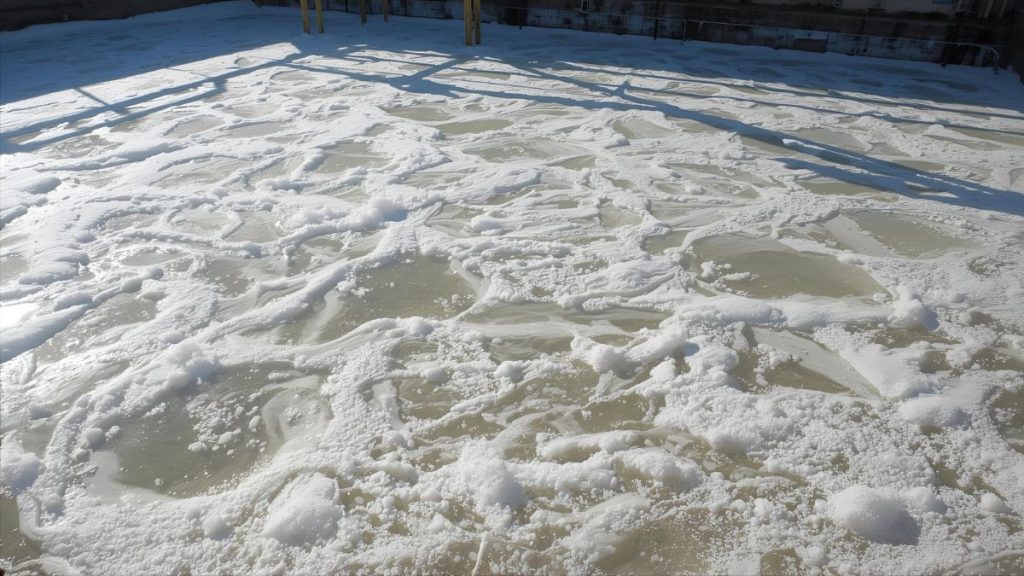Foam formation may seem like a minor nuisance, but in the world of water treatment, it can create serious operational challenges. Defoamers in water treatment are vital chemical agents designed to control and eliminate foam, ensuring smooth operation of water and wastewater treatment systems.
From improving process efficiency to maintaining water quality standards, defoamers are indispensable in a wide range of industrial applications.
What Are Defoamers in Water Treatment?
Defoamers, also known as anti-foaming agents, are chemical additives formulated to reduce and prevent the formation of foam in liquid systems. Foam is generated when gas is dispersed in a liquid and stabilized by surfactants or impurities. In water treatment systems, foam may arise due to organic matter, chemical reactions, or biological processes.
A defoamer works by destabilizing the foam lamella (the thin film that separates gas bubbles) and breaking it down into liquid and air. Most defoamers are composed of hydrophobic materials such as oils, silica, or polymers that spread across the foam surface and collapse it.
Key characteristics of defoamers include:
- Insolubility in water – ensuring that they remain on the surface where foam forms.
- Low surface tension – enabling them to spread rapidly over foam films.
- Ability to penetrate foam walls – breaking the bubbles and preventing reformation.
In water treatment, the choice of defoamer depends on system conditions, the type of foam, and environmental regulations.
Read Also: The Role of Antifoam in Wastewater Treatment
Common Applications of Defoamers
Foam is not limited to a single industry. It is a widespread challenge across multiple sectors that rely on water treatment systems. Below are the most common applications where defoamers are essential:
1. Wastewater Treatment Plants (WWTPs)
Biological wastewater treatment processes often generate excessive foam due to microbial activity and the presence of surfactants. Foam can overflow from aeration tanks and clarifiers, leading to hygiene issues, safety hazards, and reduced treatment efficiency. Defoamers are applied to suppress foam and ensure stable biological treatment.
2. Cooling Water Systems
Cooling towers and heat exchangers use large volumes of water. Foam in these systems can reduce cooling efficiency, interfere with circulation, and promote microbial growth. Defoamers are commonly used to control foam, thereby maintaining heat transfer efficiency and equipment longevity.
3. Boiler Systems
In boilers, foam formation can lead to carryover—where water droplets are carried with steam into downstream equipment. This results in scaling, corrosion, and reduced efficiency. The use of defoamers minimizes carryover and ensures consistent steam quality.
4. Pulp and Paper Industry
Paper manufacturing involves numerous chemical processes where foam is a recurring problem. Foam in white water systems, washers, and recovery boilers disrupts operations and product quality. Defoamers are critical for maintaining smooth production and consistent paper quality.
5. Food and Beverage Industry
In processes like fermentation and cleaning-in-place (CIP) operations, foam formation is common. Uncontrolled foam can contaminate products, reduce process efficiency, and create sanitation challenges. Food-grade defoamers are specially designed to address these issues safely.
6. Chemical and Petrochemical Processing
Chemical reactions often generate foam that disrupts mixing, reduces reactor capacity, and complicates product separation. Defoamers are introduced to maintain process control and protect product quality.
7. Pharmaceutical Industry
Fermentation and bioreactor operations in pharmaceuticals are prone to foam generation. Excess foam not only hinders oxygen transfer but may also compromise sterility. Pharmaceutical-grade defoamers are designed to meet stringent quality standards while maintaining process reliability.
Read Also: Foaming in Wastewater: Common Problems and Control Strategies
Why Is It Important to Manage Foam in Industrial Systems?
Foam management is not just a matter of aesthetics or convenience. In industrial water treatment systems, foam creates tangible risks and costs. Here are the main reasons why effective foam control is crucial:
1. Operational Efficiency
Excessive foam can reduce the effective volume of tanks, interfere with liquid flow, and disrupt sensors and instrumentation. This directly reduces system performance and increases downtime.
2. Equipment Protection
Foam can cause pump cavitation, block filters, and damage compressors. Over time, this leads to increased maintenance costs and unplanned equipment failures.
3. Safety Concerns
Foam overflow in wastewater plants or industrial tanks creates slippery surfaces, bacterial contamination risks, and potential exposure to hazardous chemicals for operators. Managing foam ensures safer working environments.
4. Water Quality Compliance
Foam can trap solids, oils, and microorganisms, leading to effluent that does not meet regulatory discharge standards. By using defoamers, industries can maintain compliance with strict water quality regulations.
5. Energy and Resource Efficiency
Foam in cooling towers and boilers reduces heat transfer efficiency, which leads to higher energy consumption. Defoamers help optimize energy use, supporting cost savings and sustainability.
6. Product Quality and Yield
In industries such as food, beverage, pharmaceuticals, and paper, foam directly impacts product quality and yield. By controlling foam, businesses can achieve consistent production standards and minimize waste.
Read Also: Foaming in Cooling Towers: A Problem that Disrupts Efficiency
Bringing Expertise to Your Water Treatment Needs
Foam in water treatment systems is more than just a surface-level inconvenience; it can affect efficiency, safety, compliance, and even sustainability. Defoamers in water treatment provide a reliable way to address these challenges, but achieving the best results requires more than simply adding a chemical. It takes the right expertise, proper evaluation, and continuous optimization.
With over 40 years of experience, Lautan Air Indonesia supports industries with integrated water treatment solutions. From customized defoamer programs to a complete range of treatment chemicals—including coagulants, flocculants, disinfectants, pH adjusters, and antifoaming agents—our portfolio is designed to match diverse operational needs. We also provide equipment and filtration systems, operation and maintenance services, as well as laboratory testing and technical support to ensure long-term reliability.
Whether your operations involve wastewater treatment, cooling systems, boilers, or other industrial processes, Lautan Air Indonesia offers tailored approaches that help you manage foam effectively and sustainably. By partnering with us, you gain access to proven solutions and dedicated expertise that protect your systems, support compliance, and drive efficient performance.
Contact Lautan Air Indonesia today to discover how our defoamer solutions and comprehensive water treatment services can support your business success.



